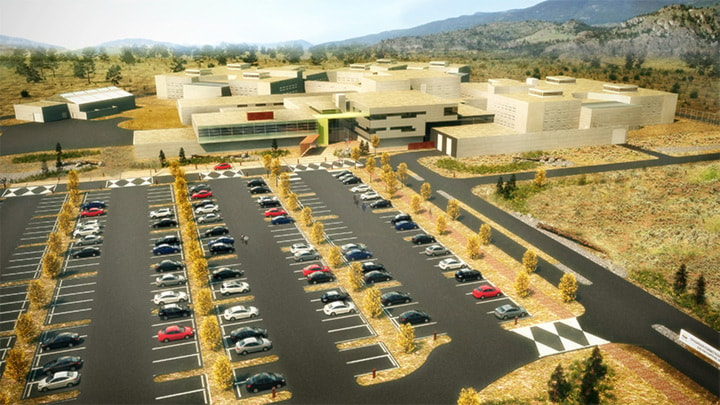Third-party business interests outweigh the public’s right to know the dollar value of monthly payments to the group contracted to design, build and maintain the Okanagan Correctional Centre.
“As that information is protected under the Freedom of Information and Protection of Privacy Act (FOIPPA), we’re unable to publicly disclose the monthly payment amounts,” Justice Ministry spokeswoman Cindy Rose said in a statement, adding that to do so could reveal “third-party proprietary information.”
Earlier this month, Partnerships BC released a report that confirmed the ministry’s assertion that the public-private partnership with Plenary Justice is indeed the most cost-effective way to finance, construct and run the 378-cell jail north of Oliver, which has a stated capital cost of $192.9 million.
Including other charges, such as facility maintenance and debt servicing, the report pegs the net present cost of the project at $241.6 million in today’s dollars over the life of the 30-year agreement.
Also included in the 28-page report, however, is a small graph that appears to show total payments to Plenary Justice will escalate with inflation, but average about $12 million annually if there are no penalties for missing service targets.

Rose declined to provide the actual numbers used to draw the graph, but did reveal that in 2017-18, the first full year of jail operations, payments will total $10.8 million. That amount over the life of the 30-year deal equals $324 million, well above the stated net present cost.
B.C. New Democratic Party justice critic Mike Farnworth suggested a simple solution to sort out the discrepancy.
“The easiest way to find out would be for the government to live up to its commitment to be open and transparent,” he said.
“They always use the excuse, ‘Well, we have to comply with FOIPPA,’ but the reality is they can be as transparent as they choose to be. And I think in projects like this, as in many other government projects, the public would be better served if the government was just upfront.”
Besides making regular payments to Plenary Justice, the province will also contribute $71.1 million in capital costs during construction, plus spend another $20 million annually at the jail through BC Corrections, Rose said.
“The majority of this cost will be salary and benefit costs for staff,” she noted.
Partnerships BC’s report also promised that construction of the jail will create 500 direct and 500 indirect jobs and “provide a boost to the local economy.”
Rose said the procurement process for goods and services that’s beginning now should be complete by early fall, and “many local contractors will be bidding on these packages.”
Farnworth called on the Liberal government to report how many locals actually get work.
“If it’s not materializing, we should know that,” he said.
Oliver Mayor Ron Hovanes said there has been little activity at the jail site recently, but expects to see it soon when construction begins in earnest later this summer.
“It certainly is a topic of conversation,” he said. “People are getting ready for the onslaught of workers, that sort of thing.”
